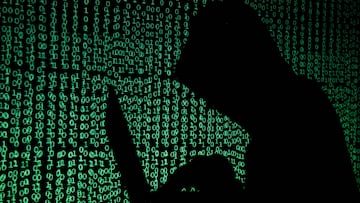Who is IntelBroker? What security breaches is the threat actor responsible for?
A threat actor that goes by the name IntelBroker has struck again, and this time, they are claiming to have breached Apple’s security systems.

IntelBroker, a threat actor who has taken responsibility for a number of high-profile data breaches in the past, is now claiming to have acquired the source code of three internal tools used at Apple- AppleConnect-SSO, Apple-HWE-Confluence-Advanced, and AppleMacroPlugin.
According to Apple news website 9to5Mac, the threat actor said Apple.com suffered a data breach in June 2024 that led to the exposure.
Apple has yet to confirm any such incursion into their security systems, but the alleged incident became public after a post was made on BreachForums claiming that they had been able to break through.
READ ALSO: CDK Global provides more information to customers
What security breaches is the threat actor IntelBroker responsible for?
IntelBroker claimed earlier this week that they were selling data from a breach at Advanced Micro Devices (AMD). The cybercriminal said the breach led to the compromise of critical information such as customer databases, source code, and finances.
🚨 #DataBreach 🚨
— HackManac (@H4ckManac) June 18, 2024
A potential data breach at AMD has been detected on a hacking forum: IntelBroker is selling the data.
According to the post, in June 2024, AMD suffered a data breach leading to the compromise of information such as future AMD products, spec sheets, employee… pic.twitter.com/P28SvFt1Eo
The threat actor is believed to be responsible for breaches on other large organizations including government agencies such as Europol and the U.S. State Department, as well companies like Barclays Bank, DC Health Link, Facebook Marketplace, Home Depot, General Electric, U.S. cellular carriers, and Zscaler.
READ ALSO: Second major cyberattack on car dealerships this month raises questions about security
What is a threat actor? Is this the same as a hacker?
A threat actor, also known as a bad actor or malicious actor, is a person, group, or organization that poses a potential risk to cybersecurity by attempting to exploit vulnerabilities, conduct attacks, or cause damage to digital assets and networks.
Although the terms “hacker” and “threat actor” are sometimes used interchangeably, there are some distinctions between the two. Hackers are individuals skilled in computer systems, networks, and programming who use their expertise to explore, exploit, or manipulate these systems. Threat actors on the other hand, do not necessarily have technical skills. For example, they can carry out their activities by simply sending out emails with malware, or using infected USB drives.
Related stories
Hackers can have varying motives and ethical standards, ranging from benign to malicious. They can use their skills to improve security, protect systems, and help organizations, although some can also engage in criminal activity. Threat actors usually act maliciously, threaten cyber-security, and try to cause harm to digital devices or systems.
While all hackers can be considered threat actors if they pose a risk, not all threat actors are hackers. Threat actors represent a broader category that includes various entities and methods beyond the realm of hacking.


Complete your personal details to comment